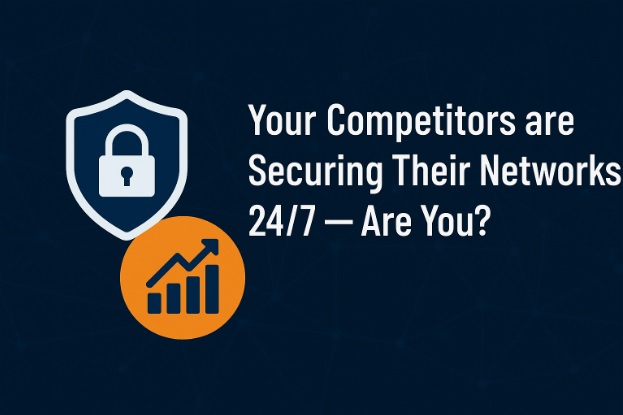How to Build a Security-First Culture That Empowers Your Hybrid Workforce
We’re told that tools are only as good as their users. This is becoming more and more true as the world shifts to a hybrid work model to deal with the complexities posed by the COVID-19 pandemic. While it’s great to define and implement essential security controls and tools, if it isn’t backed up by workforce buy-in and participation, it may never become a cultural priority and hence, never fully adopted.
A Ponemon survey of IT security leaders revealed that 62% of remote employees do not follow security protocols closely[1] And that’s only half the story. Think of all the logistical and monitoring challenges posed by hybrid working environments. You may have some employees working remotely, some from your office and a few others at a co-working space. If you have rotational or varying shifts, you will have employees working throughout the day at different times in different places. To put it plainly, building a security-first culture in this new era is a difficult undertaking.
You will need to create and implement a comprehensive cybersecurity strategy that involves and empowers your hybrid workforce. Here are the key components of this strategy:
Perimeter-Less Technology
In a hybrid work model, you will have employees spread over multiple locations, working together online. Some may use less secure home internet connections, while others may use personal devices to get the job done. That’s why it is critical to upgrade your security systems, tools and controls to make sure they match the demands of a hybrid environment.
This means going “perimeter-less” and investing in cloud-based SaaS applications, secure VPNs, identity and access management tools, patch management applications, unified endpoint management systems, and backup and recovery solutions.
Make sure the applications you choose support “Zero Trust architecture”. It is a security concept that dictates that every attempt to access company networks and systems must be verified first, whether within your network perimeter or outside it.
Documented Policies and Procedures
If your security policies and procedures are not clearly documented, you will struggle to enforce them as well as having difficulty growing adoption of them. Your staff may not know what steps are involved or what the purpose of the whole process is. There will be no buy-in from their side. For instance, if you don’t have an Acceptable Use Policy for your VPN in writing, your employees may end up using it for non-work purposes.
Identify critical IT policies and procedures like change management, remote access, incident response & reporting, etc. Then, have all of them documented and shared with your teams and members of your staff. Remember to keep the files up to date and in an easily accessible location. This will make it easier to enforce policies. Employees will know what is expected of them and why. Finally, make sure policies are reviewed periodically and make changes if needed.
Security Awareness Training Programs
Aim to make your employees the first line of defense against cyberattacks. Although this approach has been around for years, it is even more relevant in a hybrid work environment. The risk factor is higher, so you should take it seriously—no more gimmicks or placation to meet compliance requirements.
Deploy engaging and comprehensive training programs that will help reduce human errors, develop good security habits and create awareness about the current threat landscape. Create training videos and a knowledge base covering security best practices and SOPs.
Along with that, you should set up interactive training programs that help employees learn how to defend against phishing, ransomware, brute-force password attacks and social engineering. After training, reinforce what they learned by conducting routine tests and simulations.
Communication and Support Channels
When communication and support channels are clearly defined and easily accessible, you can handle threats more effectively. Every member of your team will know how to raise an alarm, who to contact and what to do after reporting it. This will help you detect threats early, which will allow you to minimize their impact.
Additionally, you should clearly define what tools can be used for communication and collaboration. For instance, employees should be discouraged from using personal apps like WhatsApp and Facebook for official communication and file transfer. Not only does it put company data in danger, it might also hurt your chances of achieving compliance.
Friction-Free Systems and Strategies
When it comes to devising new security strategies or evaluating new systems, ensure that you give due importance to user experience and efficiency. For instance, if your company’s antivirus solution is slowing down employee workstations, they may resort to disabling it to get work done, which is a recipe for disaster.
Although security is critical, it shouldn’t come at the cost of efficiency and user experience. Following security measures and policies shouldn’t feel like extra work, otherwise employees could grow weary and abandon security best practices altogether. Ensure your security systems and strategies dovetail nicely with their workflow.
Next Steps
The truth is, building a security-first culture is challenging. The hybrid work model has only made it more complicated by adding dozens of new layers and steps to the process. You will certainly need skilled staff, 24/7 support and specialized tools if you want to implement a security-first culture within a hybrid work environment.
If you are thinking about going down this path, we can help ensure proper and effective implementation and ongoing management of necessary IT/cybersecurity and data security controls.
Sign up for a consultation to learn more about how we can help. You can do so here - https://www.icgi.com/contact We look forward to it!
[1] [1]According to IT security leaders, remote workforces pose a greater risk to data because home networks are less secure (71%) and employees do not follow security protocols as closely (62%). [Source: 2021 Data Exposure Report Insider Risk, Ponemon]
.png)




